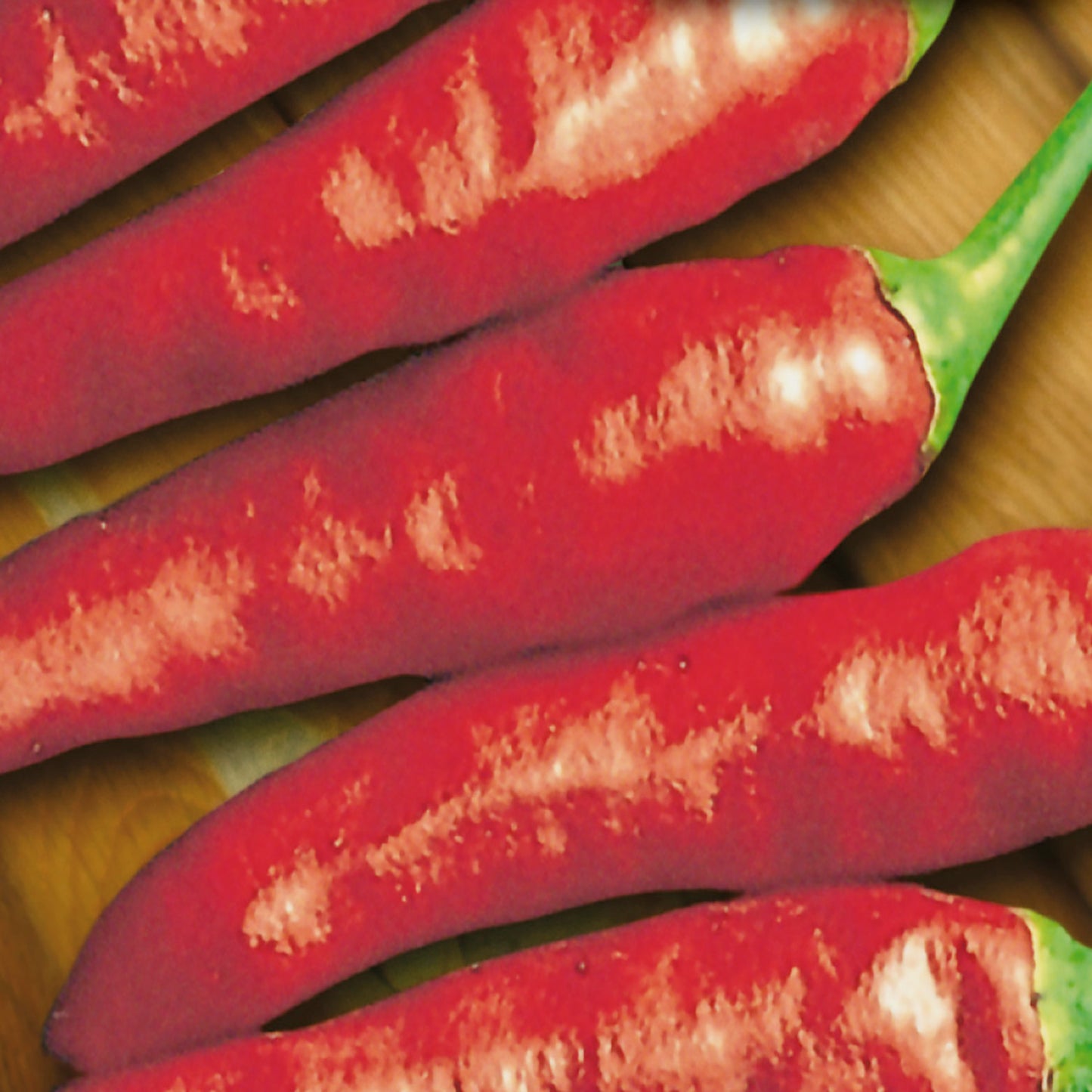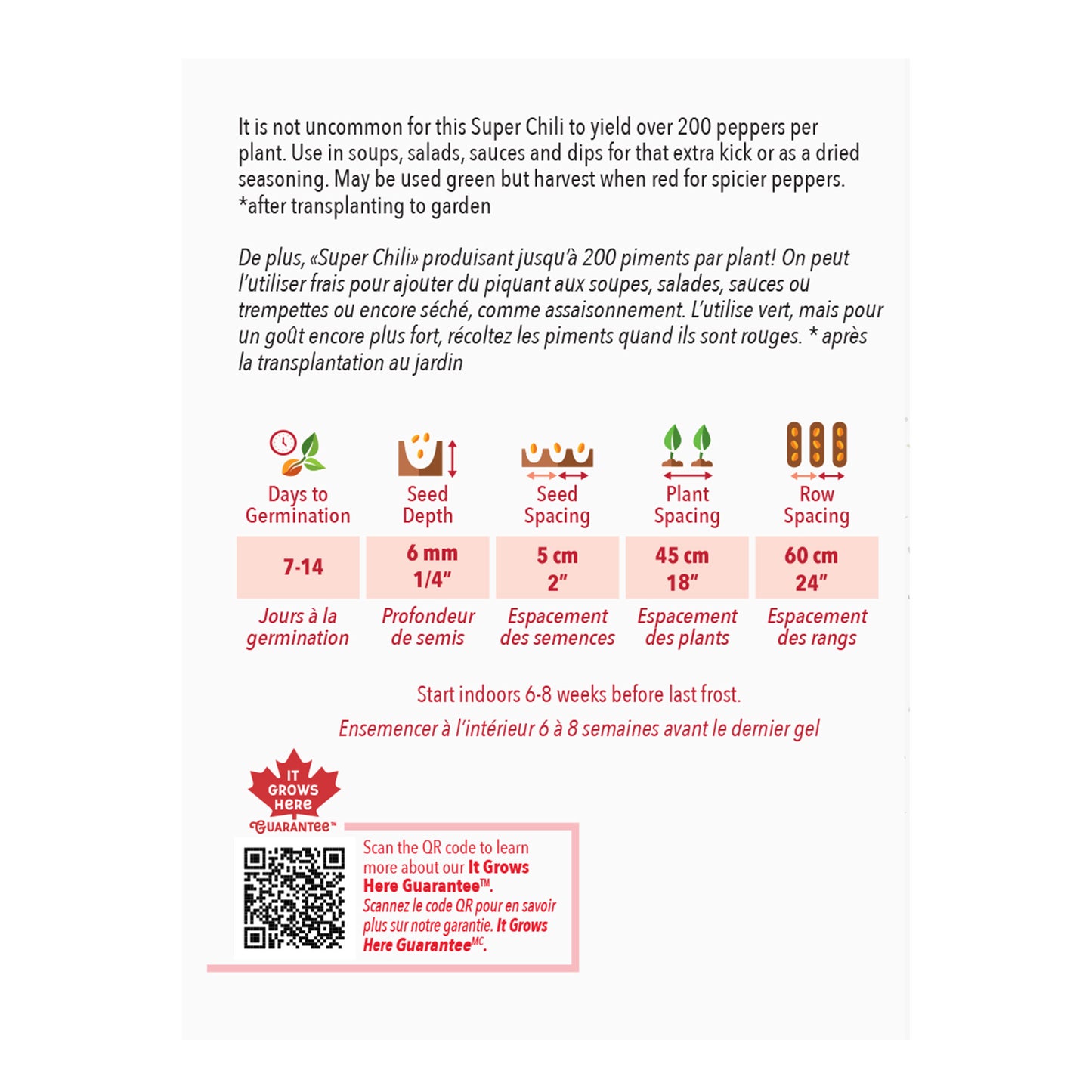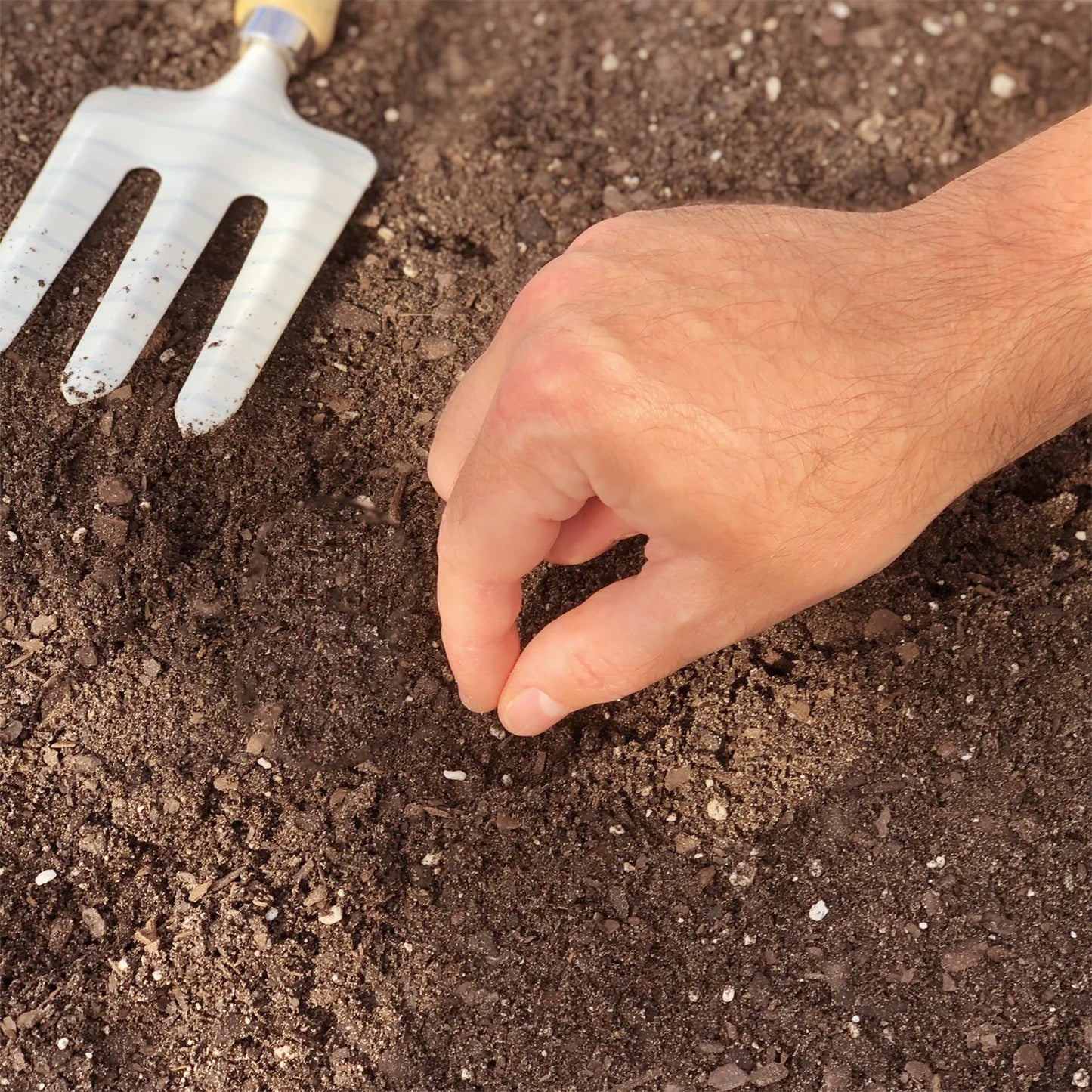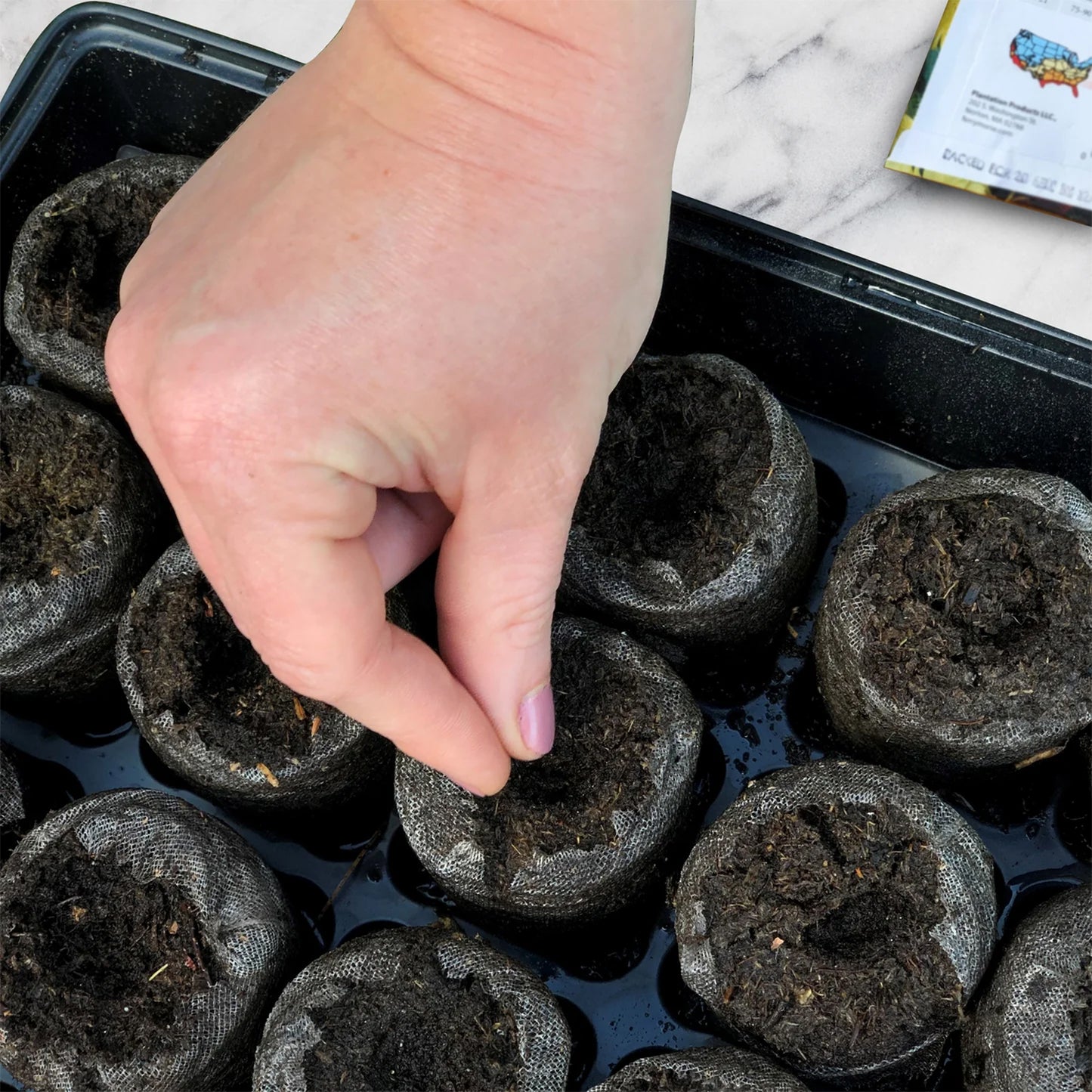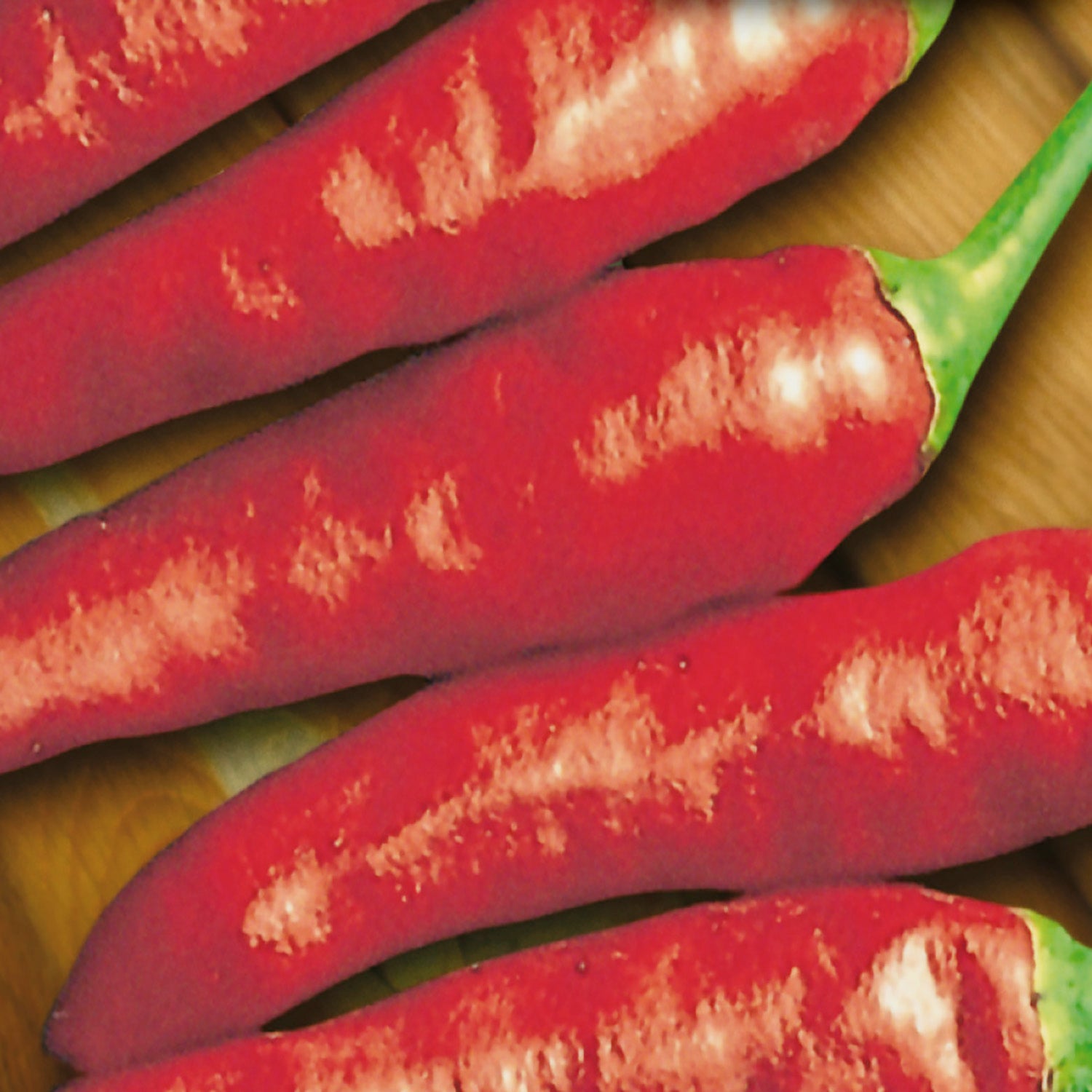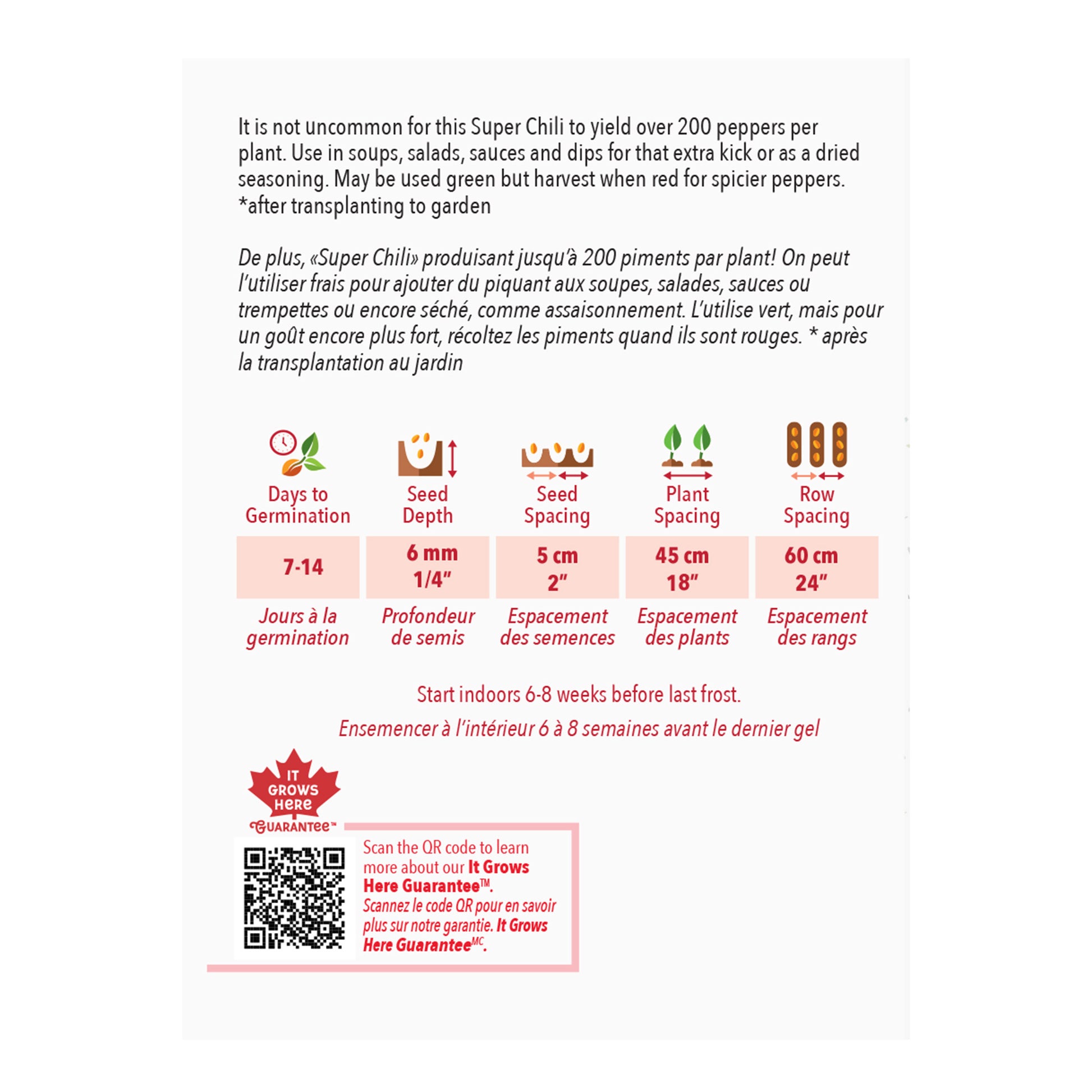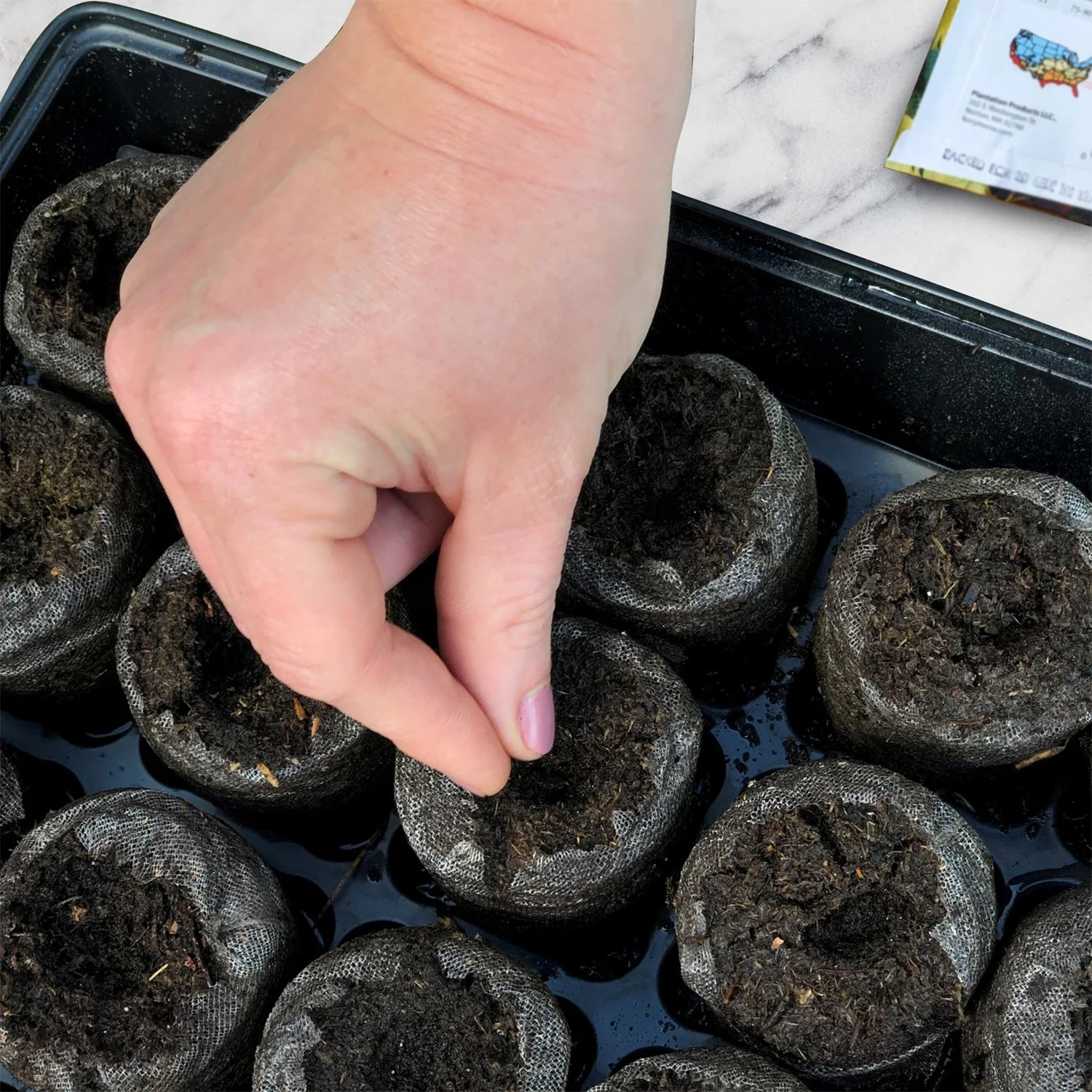Start pepper seeds indoors 6 to 8 weeks before the last frost in your area. Follow the seed depth and spacing guidelines indicated below. Once all danger of frost has passed, seedlings should be hardened off before planting in their growing location. Seedlings should be transplanted according to the plant and row spacing directions below. Transplant seedlings into the garden once the soil temperature has reached 18°C (65°F). Pick a location sheltered from the wind. Pepper plants have brittle branches and it is a good idea to support plants at time of planting with a cage or stakes to prevent bending as they grow. Regularly monitor your plants and ensure that the soil remains moist , but not soggy while they establish themselves in their new environment.
